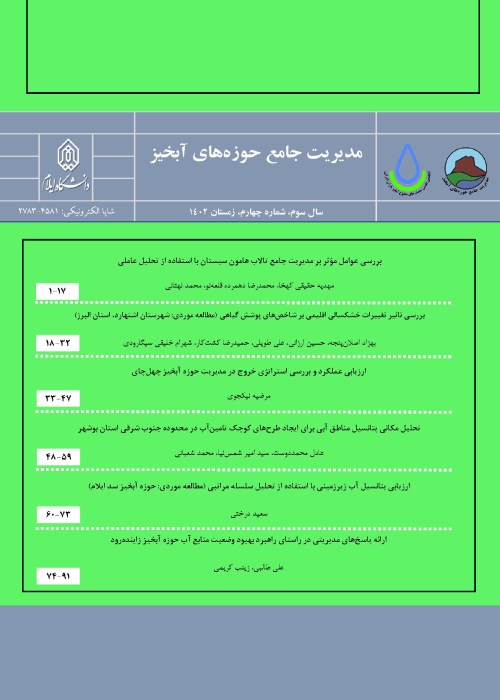Evaluating the Rate of Natural Land Degradation Based on Land Use Change in Zagros Forests
Land use change is one of key factors in global environmental change, which affects a wide range of environmental characteristics and natural resources (processes and functions of ecosystems and climate systems, water quality, land and air resources). Excessive destruction and exploitation of forests and pastures, inadequate cultivation patterns, land degradation due to population growth and lack of proper management of natural environments have endangered nature and destructed habitats. Planning in this respect demands a clear understanding of how the land should be used and the type of activity done in each part of it in order to obtain accurate information about different communities and terrestrial phenomena. Also, it is difficult to access information to evaluate land degradation and land use change on both global and regional scale. One of the most important ways to determine land use change is satellite imagery. Because protected areas play an important role and are the core of biodiversity conservation, their management and conservation require further field research. Therefore, having information about land use and its changes over time is one of the important issues in planning and policy-making in this region. Therefore, the present study was conducted to predict and evaluate the rate of natural land degradation by emphasizing land use change in the Dinarkoh protected area.
Dinarkoh forest protected area is one of the mountainous areas of Ilam province. This study collected the required information about the study area and similar studies using library and field studies. Then, satellite images were extracted for data analysis and software methods were used to process them. In this way, after examining the geometric and atmospheric errors in the images used, using the maximum probability method, a map of land use classes related to the period 2001-2020 was created. Then, using two post-classification comparison methods, the difference in vegetation index (NDVI) was used to detect and study land use changes in the study period.
The results of evaluating the accuracy of the map obtained from the classification with the maximum probability algorithm on TM and OLI images showed that the accuracy of each of the TM and OLI classified images in the supervised classification method with the maximum probability method is high and acceptable. Considering the overall accuracy of 92.09% in TM image classification and 92.66% in OLI image, it can be said that these two images can prepare the desired area map at any time and can be used to identify changes. The results showed that factors such as similarity of the reflection of some lands which causes an inaccurate segregation of classes reduce the accuracy and are classified as a source of error. Therefore, in general, it can be said that according to the accuracy obtained from TM and OLI images, these two sensors can detect changes. The results showed that forest exploitation and a sharp increase in the population of villages and cities and their need for housing and economic factors have reduced the level of forest. Comparison of the classification maps obtained from the methods used in this research with the ground reality map showed that these methods have different accuracy in identifying areas of change and non-change. The results of satellite image processing showed that in 2001, compared to 2020, more than 6000 ha of forest lands in the region during the 19-year period have been converted into non-forest lands such as agriculture and rangeland, which indicates poor protection of the region.
The results showed that 8000 ha lands in the study area in terms of NDVI index had a decrease in vegetation cover, which indicates the trend of degradation in the region and the need for more serious conservation measures.
- حق عضویت دریافتی صرف حمایت از نشریات عضو و نگهداری، تکمیل و توسعه مگیران میشود.
- پرداخت حق اشتراک و دانلود مقالات اجازه بازنشر آن در سایر رسانههای چاپی و دیجیتال را به کاربر نمیدهد.



